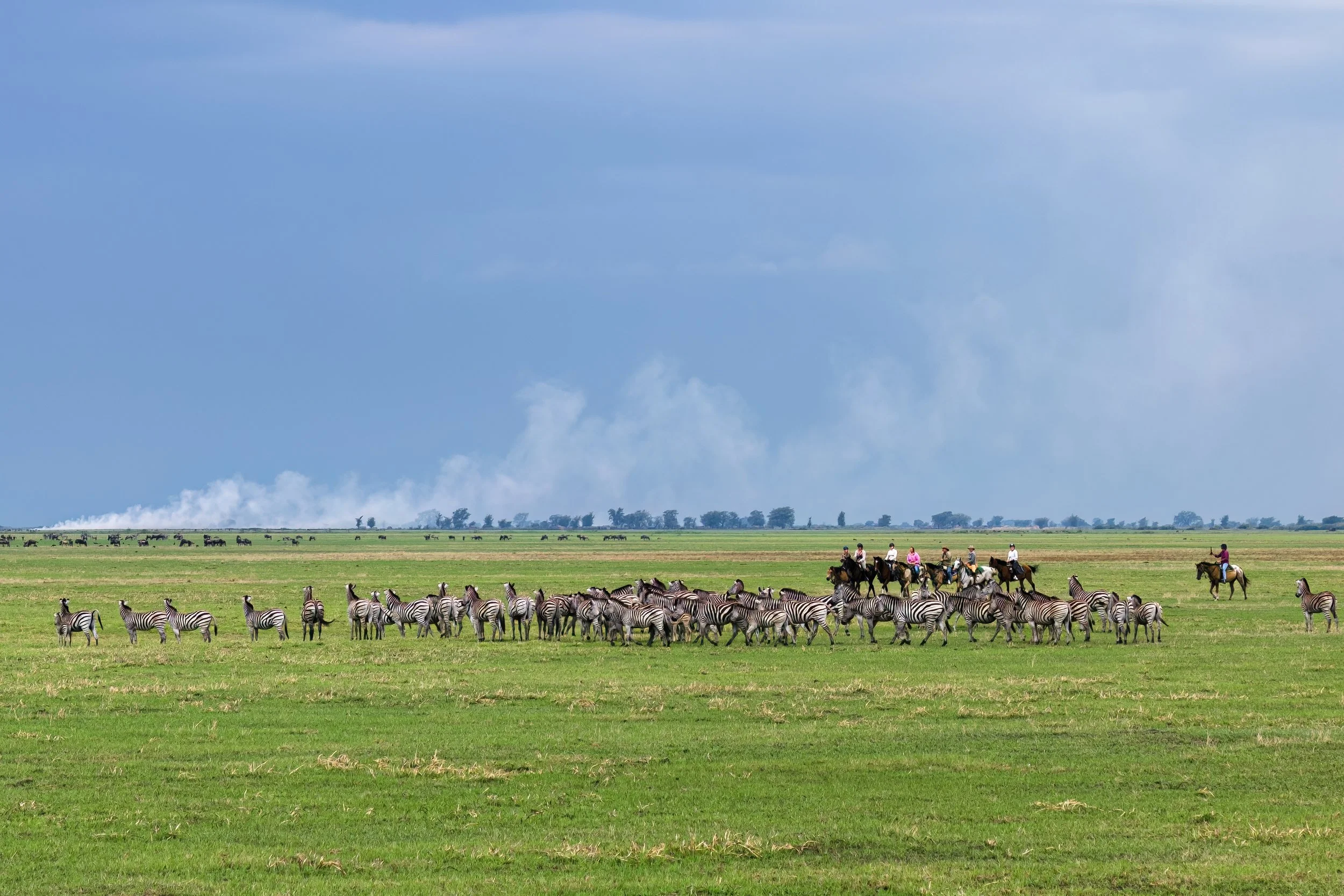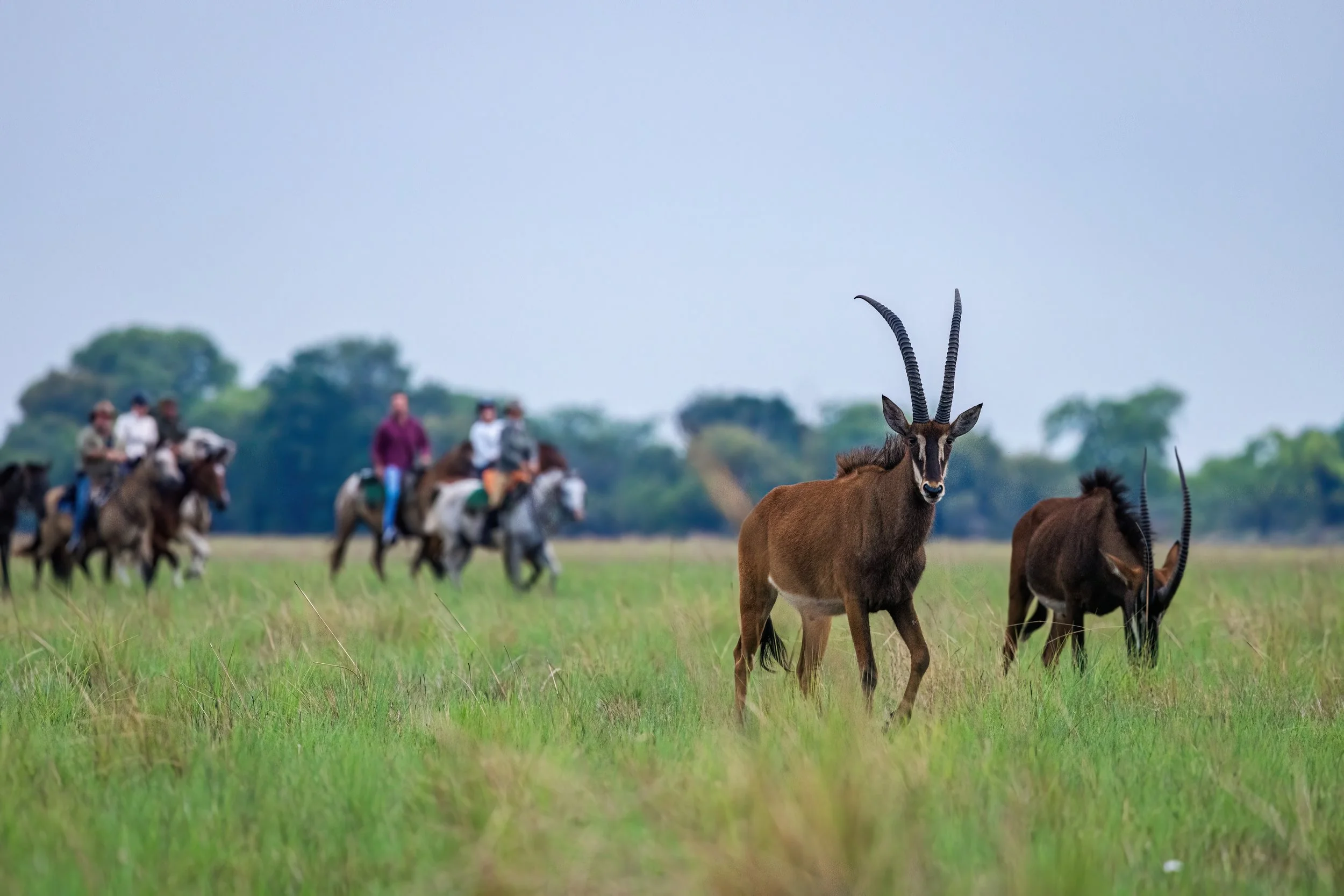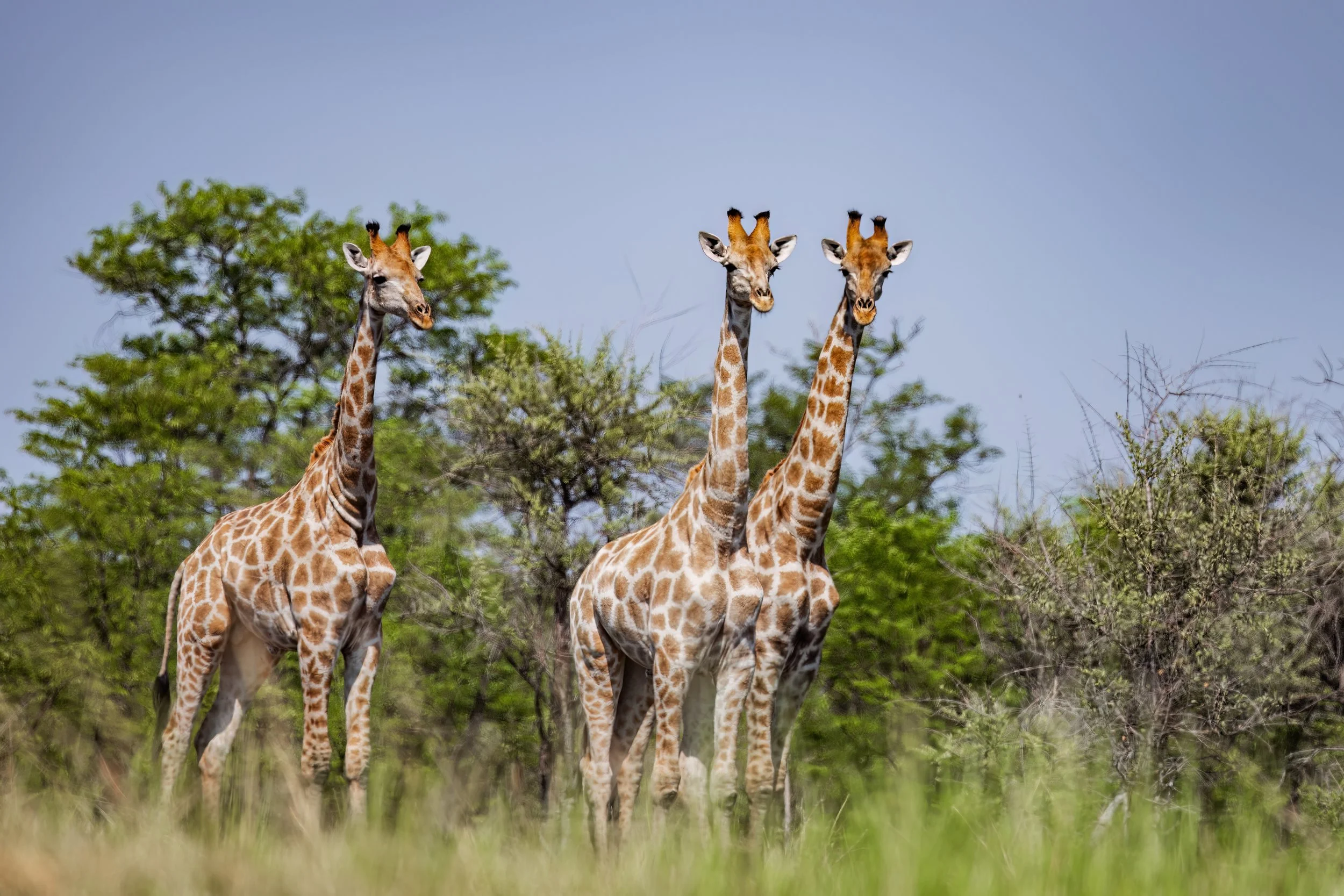
Ride side by side with wildlife in THE SIMALAHA
The Conservancy comprises 180 000 ha of communal land and lies within one of six key wildlife dispersal areas in the Kavango Zambezi Transfrontier Conservation Area (KAZA), namely the Chobe Zambezi dispersal area that reaches from Chobe National Park in Botswana to Kafue National Park in Zambia.
The Conservancy is fundamental to re-establishing wildlife populations and their migration routes in the Kavango Zambezi Transfrontier Conservation Area – the biggest terrestrial cross-border conservation system in the world – connecting 36 protected areas across Angola, Botswana, Namibia, Zambia and Zimbabwe.
In 2013, supported by Peace Parks, a wildlife sanctuary measuring 22 000 ha was established as part of Simalaha. The first wildlife translocation to the Simalaha Community Conservancy took place on 6 October 2013 and since then, more than 3000 animals have been rewilded there, including red lechwe, puku, eland, sable, hartebeest, waterbuck, roan antelope, buffalo and giraffe. The animals have settled in well and are producing young, with more than 1 600 head of game now in the sanctuary.
Growing animal populations in the sanctuary mean that they will soon require more space. To this end, remote sensing was used in 2019 to identify human settlements and agricultural expansion in order to plan for the sanctuary’s boundary extension. Based on an analysis of the information, the sanctuary has now been expanded to 40 000 ha.
WILDLIFE CHECKLIST
The Simalaha Wildlife Conservancy has 21 large mammal species which can be seen on the plains and in the surrounding mopane forest and it is not unusual to see hundreds of wildebeest, zebra and lechwe grazing in harmony with the local tribesman’s cattle making Zambian Horseback Safaris a truly unique experience.
Wildebeest
Zebra
Red Lechwe
Puku
Hartebeest
Impala
Waterbuck
Giraffe
Buffalo
Ostrich
Eland
Sable
Reedbuck
Duiker
Vervet Monkeys
Side-striped Jackal
Hippos
Nile Crocodiles










